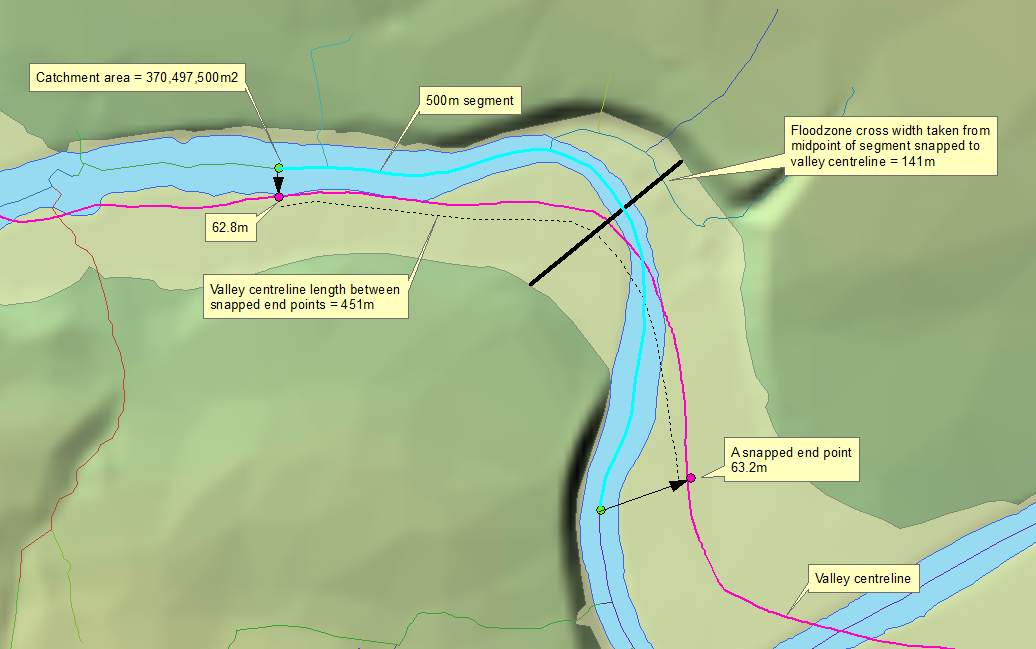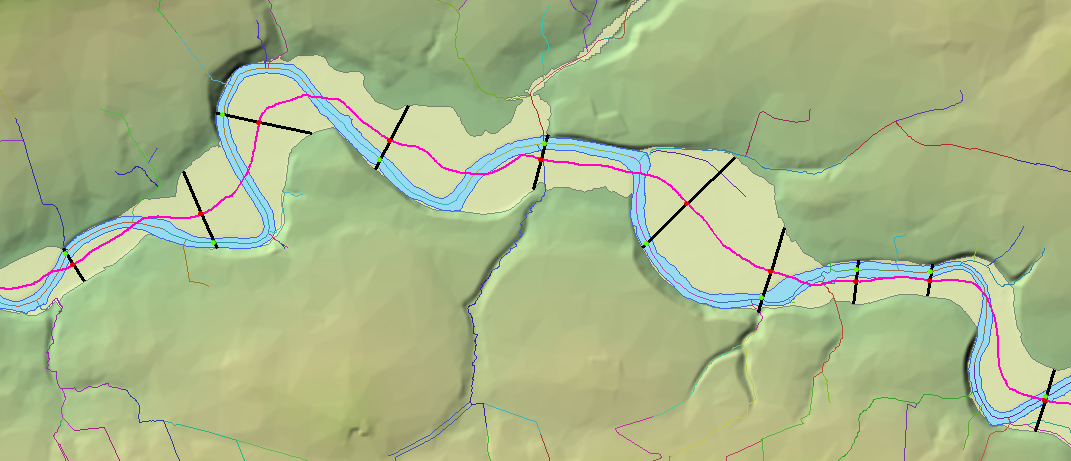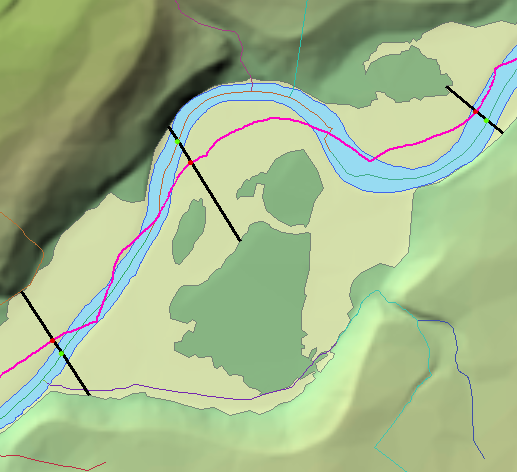@joewheaton and @dsear I have been working up the logic to segment a river network. I am unlikely to use the existing segmentation tools because of their reliance to pre-populated USA attribution and that David has specified that the segmenting of the network should include points that are:
- Derived from 500m measure
- Tributary junctions
- Bridge intersection
So all 3 sets of points will be used to cut up the network. I've had a quick chat with David to make him aware of the implications of this and would like your opinion. We think dropping tributary junctions as split points is the way forward for the following reasons...
Below is a screen shot of all 3 split point types (tributaries, regular distance (500m) and bridges)

If you use ALL 3 point types then in the sample data I am using you go from 1,189 branches to 3,239 segments, their distribution of lengths are:

| Variable |
N |
N* |
Mean |
SE Mean |
StDev |
Minimum |
Q1 |
Median |
Q3 |
Maximum |
| Shape_Length |
3239 |
0 |
206.88 |
2.83 |
160.88 |
0.07 |
69.82 |
165.10 |
317.56 |
500.00 |
Segmenting with all types of points creates segments ranging in length from 7cm up to 500m with 12% of segments attaining 500m.
Compare this with splitting only with bridge points and 500m distances. You go from 1,189 branches to 2,154 segments.

| Variable |
N |
N* |
Mean |
SE Mean |
StDev |
Minimum |
Q1 |
Median |
Q3 |
Maximum |
| Shape_Length |
2154 |
0 |
311.09 |
4.13 |
191.66 |
0.07 |
119.86 |
353.05 |
500.00 |
500.00 |
One still gets small segments (to be expected) but you have at least 43% of the data achieving a 500m length.
If I zoom into some random part of the Derwent, this is all split points:

This is the same area with tributary points turned off:

So the question is do we segment with just bridges and regular 500m spaced points or do we segment using bridges, regularly spaced points AND tributary junctions?




















































